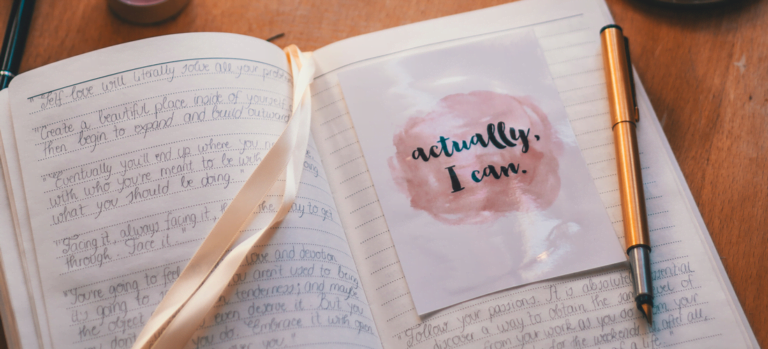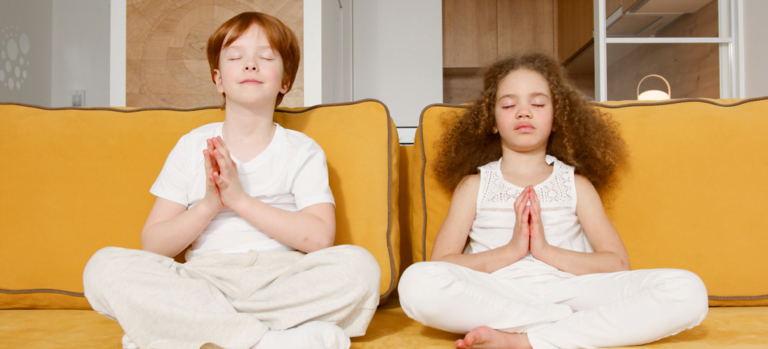Visualization Meditation, often referred to as Guided Imagery, is a powerful meditation technique that involves imagining a specific place or situation to promote relaxation and inner peace. The goal is to utilize as many of your senses as possible, such as sight, smell, taste, and touch, to conjure up the most vivid and immersive images in your mind.
In recent years, the popularity of Visualization Meditation has soared, thanks to a growing body of scientific research highlighting its potential benefits. This includes stress reduction, improved focus, and a boost to overall mental well-being. As the modern world becomes increasingly hectic, more and more people are seeking out methods like Visualization Meditation to find a sense of calm and balance in their lives.
Basics of Visualization Meditation
Visualization Meditation is not a new-age phenomenon but rather a practice with roots deeply embedded in ancient cultures. Historical records from civilizations such as the Ancient Greeks, Egyptians, and indigenous tribes worldwide indicate the use of visualization for healing and spiritual purposes. They believed in the power of imagery and mind-body connections, utilizing it to induce tranquility and promote wellness.
Unlike other meditation techniques, Visualization Meditation actively engages the imagination, allowing you to become an active participant in the meditative process. While mindfulness meditation encourages you to focus on the present moment, and transcendental meditation involves repeating a mantra, Visualization Meditation requires you to construct a peaceful scene or scenario in your mind.
This difference doesn’t simply make Visualization Meditation unique, but it also makes it particularly appealing to those who find it challenging to clear their mind or concentrate on a singular point of focus. In essence, Visualization Meditation leverages our innate capacity for imagination to facilitate relaxation and mental harmony.
Step-by-Step Guide to Visualization Meditation
1: Find a Quiet and Comfortable Space
- Choose a quiet place where you won’t be disturbed.
- Sit or lie down in a comfortable position. You can use a cushion or chair for added comfort.
2: Set an Intention
- Decide on a specific intention or goal for your visualization. It could be related to personal growth, relaxation, or achieving a particular dream.
3: Begin Deep Breathing
- Close your eyes and take a few deep breaths to relax. Inhale deeply through your nose, and exhale slowly through your mouth.
- Focus on your breath to calm your mind.
4: Visualization
- Imagine your intention or goal as if it has already been achieved. Be as detailed and vivid as possible.
- Use all your senses: see, hear, smell, taste, and touch the elements of your visualization.
- If your goal is to reduce stress, visualize yourself in a peaceful and serene environment. If it’s about achieving a career milestone, see yourself successfully completing the task.
- Feel the emotions associated with your visualization, whether it’s happiness, contentment, or achievement.
5: Stay Focused
- It’s normal for your mind to wander. When you notice your thoughts drifting, gently bring your attention back to your visualization.
- Stay patient and persistent in maintaining your focus on the image and feelings you’re trying to manifest.
6: Deepen the Experience
- As you continue with your visualization, try to deepen the experience by adding more details and emotions.
- Pay attention to any positive sensations or changes in your body as you immerse yourself in the visualization.
7: Time Management
- Depending on your preference, you can practice visualization for a few minutes or up to 20-30 minutes.
- Don’t rush the process; take your time to fully engage with your visualization.
8: Express Gratitude
- After completing your visualization, express gratitude for the experience and for the realization of your intention.
- This step can enhance the positive energy of your practice.
9: Gradual Return
- Slowly bring your awareness back to the present moment. Wiggle your fingers and toes, and gently open your eyes when you’re ready.
10: Reflect and Journal
- Take a moment to reflect on your visualization experience.
- Consider keeping a journal to record your visualizations, insights, and any progress you notice over time.
11: Consistency is Key
- Regular practice is essential for reaping the benefits of visualization meditation. Aim to incorporate it into your daily or weekly routine.
Visualization meditation can be a powerful tool for achieving your goals, reducing stress, and enhancing your overall well-being. Remember that it may take some time to see significant results, so be patient and persistent in your practice.
Benefits of Visualization Meditation
Visualization meditation offers numerous benefits for mental, emotional, and even physical well-being. Here is a list of some of the key benefits, along with brief discussions of each:
- Stress Reduction and Relaxation:
- Visualization meditation helps calm the mind, reduce stress, and induce a state of relaxation. By immersing yourself in a peaceful mental image, you can release tension and promote a sense of tranquility.
- Enhanced Self-Awareness:
- Visualizing your goals, desires, and inner thoughts can lead to increased self-awareness. This self-reflection helps you understand your aspirations, motivations, and areas of personal growth.
- Improved Confidence and Self-Esteem:
- Visualization allows you to see yourself in a positive light, achieving your goals and aspirations. Repeatedly visualizing success can boost your self-confidence and self-esteem.
- Goal Setting and Manifestation:
- Visualization is a powerful tool for setting and achieving goals. By vividly imagining your desired outcomes, you can program your subconscious mind to work towards those objectives, making them more likely to manifest in reality.
- Enhanced Creativity and Problem-Solving Skills:
- Visualization meditation encourages creative thinking and problem-solving. It can help you envision new ideas, approaches, and solutions to challenges you may be facing.
- Emotional Regulation:
- Visualization allows you to process and manage emotions effectively. You can use this technique to visualize coping with difficult situations, reducing emotional reactivity, and maintaining emotional balance.
- Improved Focus and Concentration:
- Practicing visualization enhances your ability to concentrate and stay focused. By repeatedly directing your attention to your chosen mental imagery, you train your mind to remain attentive.
- Positive Mindset and Attitude:
- Visualization meditation promotes a positive mindset. It helps you replace negative thought patterns with constructive, optimistic beliefs, which can lead to a more positive attitude in daily life.
- Pain Management:
- Visualization can be used as a complementary technique for managing pain. By imagining pain relief or visualizing the body’s healing process, individuals may experience reduced discomfort.
- Enhanced Performance in Various Fields:
- Athletes, musicians, and professionals often use visualization to enhance their performance. Visualizing success and perfect execution can lead to improved skills and outcomes.
- Boosted Motivation and Persistence:
- Visualization can ignite motivation by making your goals feel more attainable. When you can see yourself achieving your dreams, you’re more likely to stay committed and persistent in your efforts.
- Better Sleep Quality:
- Visualization meditation before bedtime can improve sleep quality. It relaxes the mind and reduces racing thoughts, making it easier to fall asleep and enjoy a deeper rest.
- Mind-Body Connection:
- Visualization strengthens the connection between the mind and body. By imagining positive physical changes, you may influence your body’s response, such as reduced stress or improved healing.
Incorporating visualization meditation into your daily or weekly routine can have a profound impact on your overall well-being, personal growth, and ability to achieve your goals. It’s a versatile practice that can be adapted to suit your specific needs and aspirations.
Tips for Successful Visualization Meditation
| Tip | Discussion |
| 1. Choose a Quiet Space | Select a peaceful and distraction-free environment for your practice. Minimize noise and ensure you won’t be interrupted during your session. |
| 2. Set Clear Intentions | Define specific goals or intentions for your visualization. Clarity helps focus your mind and guides your visualization towards a desired outcome. |
| 3. Create a Relaxing Atmosphere | Set the mood with soft lighting, calming scents, or soothing music, if preferred. A comfortable and serene atmosphere can enhance your meditation experience. |
| 4. Maintain a Consistent Schedule | Establish a regular meditation routine. Consistency helps train your mind and makes it easier to slip into a meditative state during each session. |
| 5. Choose a Comfortable Posture | Find a posture that is comfortable for you, whether sitting or lying down. Good physical comfort supports mental relaxation and focus. |
| 6. Focus on Breath Initially | Begin with a few deep breaths to relax and clear your mind. Breathing techniques help anchor your attention and prepare you for visualization. |
| 7. Start with Simple Visualizations | If you’re new to visualization, begin with simple scenes or objects. Gradually work your way up to more complex visualizations as you become more proficient. |
| 8. Engage All Five Senses | Incorporate all your senses—sight, sound, smell, taste, and touch—into your visualizations. This makes the experience more vivid and immersive. |
| 9. Be Patient and Persistent | Understand that visualization meditation may take time to yield significant results. Be patient and committed to the process for lasting benefits. |
| 10. Use Affirmations | Combine positive affirmations with your visualizations. These affirmations reinforce your beliefs and desires, aligning them with your goals. |
| 11. Keep a Meditation Journal | Maintain a journal to record your meditation experiences. This helps track progress, insights, and any patterns that emerge over time. |
| 12. Seek Guided Meditation | Utilize guided meditation sessions or apps. They provide structure and guidance, especially for beginners, and can enhance the depth of your practice. |
| 13. Stay Open to Adaptations | Be open to adapting your visualizations based on your evolving goals and needs. Flexibility in your practice allows for personal growth and transformation. |
| 14. Combine Visualization with Action | Visualization is a tool for motivation and focus, but it should be complemented by real-world actions. Take steps toward your goals to turn dreams into reality. |
| 15. Practice Mindfulness Throughout the Day | Extend the benefits of visualization into your daily life by staying mindful and present. Apply the calm and focus you gain during meditation to everyday activities. |
Following these tips can help you maximize the effectiveness of your visualization meditation practice, making it a valuable tool for personal growth, relaxation, and goal achievement.
Final Thoughts
In conclusion, visualization meditation presents an array of benefits that influence various aspects of your life, including your health, professional performance, motivation, sleep quality, and mind-body connection.
This practice not only aids in managing pain but also sparks motivation by making your goals seem more attainable. The use of visualization in different fields, such as athletics and music, leads to enhanced performance. Furthermore, visualization meditation can improve sleep quality by inducing relaxation and calming racing thoughts.
Lastly, it fortifies the connection between the mind and body, influencing bodily responses like stress reduction and healing. To experience these benefits, incorporate visualization meditation into your routine, adapting it to suit your specific needs and aspirations. By consistently practicing, you are investing in your overall well-being and personal growth.







